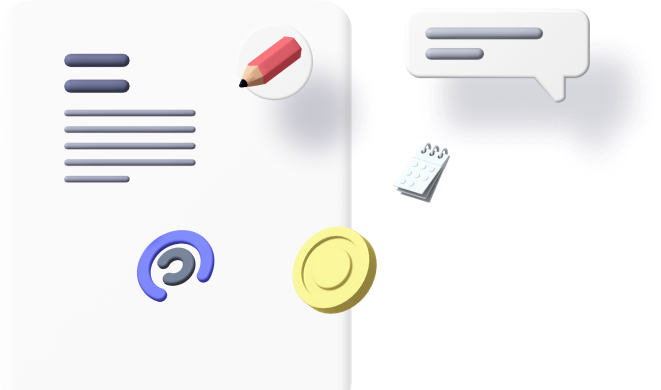
Are you struggling to produce enough high-quality content to keep up with your marketing demands? Content marketing natural language generation is transforming how businesses create, optimize, and scale their content strategies. Moreover, this revolutionary technology enables marketers to produce compelling copy at unprecedented speeds without sacrificing quality.
Traditional content creation methods can’t keep pace with modern marketing needs. Furthermore, hiring additional writers or agencies often strains budgets while still failing to meet volume requirements. However, natural language generation (NLG) technology offers a game-changing solution that combines efficiency with effectiveness.
In this comprehensive guide, you’ll discover seven proven tips for leveraging content marketing natural language generation. Additionally, we’ll explore practical strategies that successful marketers use to enhance productivity, maintain brand voice, and drive measurable results through AI-powered content creation.
Why Content Marketing Natural Language Generation Matters
The content marketing landscape has evolved dramatically, with businesses now publishing an average of 27 blog posts per month. Nevertheless, the demand for fresh, relevant content continues to outpace most teams’ production capabilities.
Recent research from Gartner reveals that by 2025, 30% of outbound marketing messages will be synthetically generated. Furthermore, companies implementing NLG technology report up to 5x faster content production while maintaining consistent quality standards.
Moreover, the global natural language generation market is projected to reach $1.5 billion by 2027. Consequently, early adopters gain significant competitive advantages in content velocity and market reach. Additionally, Content Marketing Institute data shows that consistent content publishing directly correlates with higher lead generation and customer engagement rates.
The urgency is clear: businesses that fail to adopt content marketing natural language generation risk falling behind competitors who leverage these powerful tools effectively.
Step-by-Step Guide: 7 Tips for Content Marketing Natural Language Generation Success
1. Define Clear Content Goals and Use Cases for Natural Language Generation
First and foremost, successful NLG implementation begins with crystal-clear objectives. Determine which content types benefit most from automation, such as product descriptions, social media posts, or email campaigns.
Moreover, identify specific metrics that matter for your content marketing strategy. These might include publishing frequency, engagement rates, or conversion percentages. Subsequently, align your NLG tools with these measurable goals.
For instance, e-commerce businesses often use natural language generation for product descriptions at scale. Meanwhile, B2B companies leverage NLG for personalized email sequences and industry reports. Therefore, understanding your unique needs ensures optimal tool selection and implementation.
2. Choose the Right Content Marketing Natural Language Generation Platform
Selecting the appropriate NLG platform significantly impacts your content marketing results. Furthermore, various tools offer different capabilities, from simple template-based generation to advanced AI-powered creation.
Consider platforms like Jasper AI, Copy.ai, or Writesonic for comprehensive content marketing solutions. Additionally, evaluate each platform’s integration capabilities with your existing marketing stack.
Key evaluation criteria should include output quality, customization options, language support, and pricing structure. Moreover, most platforms offer free trials, allowing you to test functionality before committing. Subsequently, this hands-on experience helps identify the best fit for your specific requirements.
3. Train Your Natural Language Generation System with Brand Voice Guidelines
Maintaining consistent brand voice across AI-generated content is absolutely crucial. Therefore, invest time in training your NLG system with comprehensive brand guidelines, tone preferences, and style requirements.
Furthermore, provide the system with examples of your best-performing content. This training data helps the AI understand your unique voice and replicate it effectively. Additionally, create detailed prompts that specify tone, audience, and content objectives.
Many successful marketers develop comprehensive prompt libraries that ensure consistency. Consequently, these templates serve as starting points for various content types while maintaining brand integrity. Moreover, regular refinement of these prompts improves output quality over time.
4. Implement Human Oversight and Content Marketing Quality Control
While natural language generation produces impressive results, human oversight remains essential. Therefore, establish a review process that ensures accuracy, relevance, and alignment with your content standards.
Additionally, assign experienced content professionals to review AI-generated drafts before publication. This collaborative approach combines the efficiency of automation with human creativity and strategic thinking. Furthermore, reviewers can identify opportunities to enhance emotional connection or add unique insights.
Consider implementing a tiered review system based on content importance. For instance, high-stakes content like thought leadership articles might require more extensive review. Meanwhile, routine social media posts may need only quick fact-checking and approval.
5. Optimize Content Marketing Natural Language Generation for SEO Performance
Natural language generation content must align with SEO best practices to drive organic traffic. Moreover, ensure your NLG tools incorporate keyword research, semantic optimization, and proper content structure.
Furthermore, train your system to include target keywords naturally throughout the content. Additionally, structure outputs with appropriate headings, meta descriptions, and internal linking opportunities. Subsequently, this optimization enhances search engine visibility and ranking potential.
Tools like SEMrush or Ahrefs can help identify relevant keywords and content gaps. Therefore, integrate these insights into your NLG prompts for maximum SEO impact. Moreover, regularly analyze performance metrics to refine your approach.
6. Personalize Content at Scale Using Natural Language Generation Data Integration
One of the most powerful applications of content marketing natural language generation is hyper-personalization. Consequently, integrate your NLG system with customer data platforms to create tailored content for different audience segments.
Furthermore, leverage demographic data, behavior patterns, and purchase history to customize messaging. For example, an AI chatbot can generate personalized property recommendations based on buyer preferences. Additionally, email campaigns can automatically adapt content based on recipient characteristics.
This level of personalization would be impossible manually at scale. However, NLG technology enables you to deliver relevant, customized content to thousands of prospects simultaneously. Therefore, conversion rates typically increase significantly with this targeted approach.
7. Continuously Test and Refine Your Content Marketing Natural Language Generation Strategy
Finally, ongoing optimization is crucial for maximizing NLG effectiveness. Moreover, implement A/B testing protocols to compare AI-generated content against human-written alternatives and different AI approaches.
Additionally, analyze performance metrics including engagement rates, time on page, and conversion data. Subsequently, use these insights to refine prompts, adjust parameters, and improve output quality. Furthermore, stay updated on NLG technology advancements to leverage new capabilities as they emerge.
Successful marketers treat content marketing natural language generation as an evolving strategy rather than a static solution. Therefore, dedicate resources to continuous learning and optimization for sustained competitive advantage.
Common Content Marketing Natural Language Generation Mistakes to Avoid
Publishing Without Human Review or Editing
The most critical mistake is treating NLG as a complete content replacement rather than a powerful assistant. Nevertheless, even advanced AI systems can produce factual errors, awkward phrasing, or off-brand messaging. Therefore, always implement human oversight before publishing AI-generated content.
Using Generic Prompts That Produce Mediocre Content
Many marketers fail to invest sufficient time in prompt engineering. Consequently, they receive generic, uninspiring content that fails to engage audiences. Instead, develop detailed, specific prompts that guide the AI toward your desired outcomes with clear instructions about tone, structure, and key points.
Ignoring Content Marketing Natural Language Generation Ethics and Disclosure
Transparency matters in content marketing. Furthermore, some audiences appreciate knowing when content is AI-assisted. Therefore, consider appropriate disclosure practices that maintain trust while leveraging NLG efficiency. Additionally, ensure all AI-generated content meets ethical standards and accuracy requirements.
Neglecting to Update Training Data and Brand Guidelines
As your brand evolves, your NLG training data must evolve too. However, many organizations set up their systems once and never update them. Consequently, AI-generated content becomes increasingly misaligned with current brand positioning. Instead, regularly refresh training materials to maintain relevance and consistency.
Benefits and ROI of Content Marketing Natural Language Generation
Content marketing natural language generation delivers impressive returns across multiple dimensions. First, production efficiency increases dramatically, with teams reporting 3-5x faster content creation speeds. Moreover, this velocity enables businesses to capitalize on trending topics and market opportunities quickly.
Additionally, cost savings are substantial. While traditional content creation costs $0.10-$2.00 per word, NLG reduces this to pennies per thousand words. Furthermore, these savings accumulate rapidly across large content volumes.
Consistency represents another significant benefit. Unlike human writers who may vary in quality or voice, NLG systems maintain uniform standards across all outputs. Consequently, brand messaging remains cohesive across channels and campaigns.
Moreover, scalability becomes virtually unlimited. Whether you need 10 articles or 10,000 product descriptions, content marketing natural language generation handles the volume effortlessly. Therefore, businesses can expand into new markets, languages, or product lines without proportional increases in content costs.
Real-world examples demonstrate these benefits clearly. E-commerce companies using NLG for product descriptions report 40% increases in organic traffic. Meanwhile, publishers leveraging AI for news summaries and sports updates maintain 24/7 content freshness without overnight staffing costs.
Conclusion
Content marketing natural language generation represents a transformative opportunity for modern marketers. Throughout this guide, we’ve explored seven essential tips for implementing NLG technology effectively while avoiding common pitfalls.
From defining clear objectives to continuous optimization, success requires strategic planning and thoughtful execution. Moreover, the combination of AI efficiency with human creativity and oversight produces the most compelling results.
The competitive advantages are undeniable: faster production, lower costs, greater consistency, and unlimited scalability. Furthermore, early adopters position themselves advantageously as this technology continues evolving and improving.
Ready to revolutionize your content marketing strategy? Contact our team today to discover how content marketing natural language generation can accelerate your results. Let’s work together to develop a customized implementation plan that aligns with your unique goals and maximizes your ROI. Don’t let competitors outpace you—start leveraging NLG technology now!
FAQs
What is content marketing natural language generation and how does it work?
Content marketing natural language generation uses artificial intelligence to automatically create written content based on data inputs and predefined parameters. Furthermore, it works by analyzing patterns in existing content, understanding language structure, and generating new text that matches specified requirements for tone, style, and subject matter.
Can natural language generation replace human content writers completely?
No, content marketing natural language generation works best as a collaborative tool rather than a complete replacement. Moreover, human writers provide strategic thinking, emotional intelligence, and creative insights that AI currently cannot replicate. Therefore, the most effective approach combines AI efficiency with human oversight and refinement.
How much does content marketing natural language generation software cost?
Content marketing natural language generation pricing varies widely based on features and usage levels. However, basic plans start around $29-49 per month for limited usage, while enterprise solutions can range from $500-5,000+ monthly. Additionally, many platforms offer free trials to test functionality before committing.
Is AI-generated content good for SEO and search rankings?
Yes, when properly optimized, content marketing natural language generation can be excellent for SEO. Furthermore, Google has stated that AI-generated content isn’t inherently problematic if it provides value to users. Moreover, the key is ensuring content is helpful, accurate, and well-optimized for target keywords and user intent.
What types of content work best with natural language generation?
Content marketing excels with structured, data-driven content types. These include product descriptions, financial reports, sports summaries, weather updates, and personalized emails. Additionally, it works well for social media posts, meta descriptions, and first drafts of longer content. However, complex thought leadership and highly creative content still benefit most from human authorship.
















